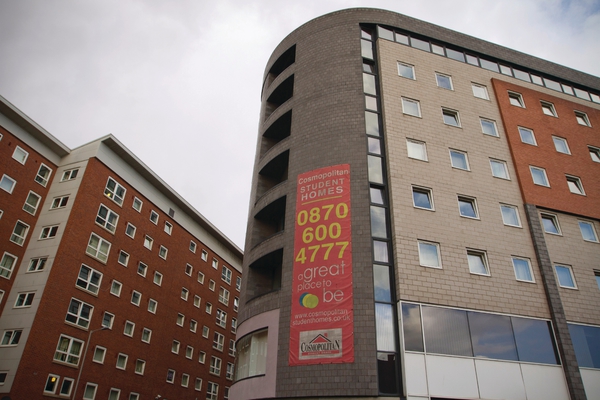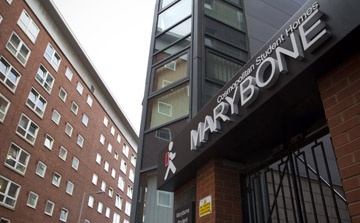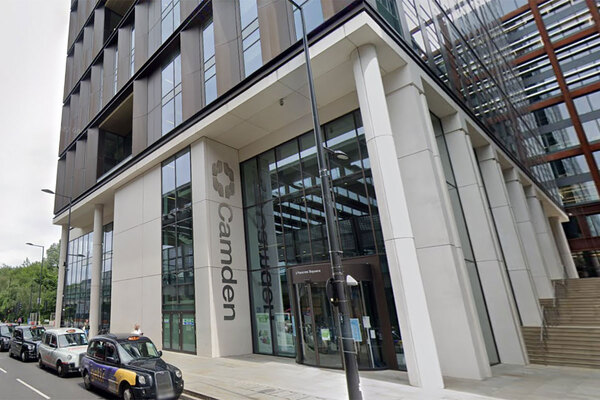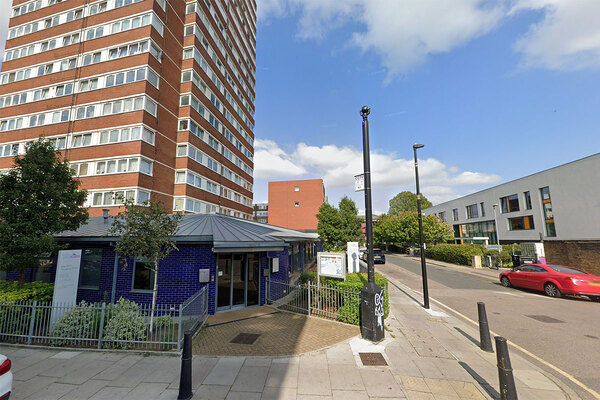Cosmopolitan: the true story
The financial crisis which hit Cosmopolitan in 2012 and brought the housing association to its knees changed the social housing sector forever. Carl Brown reveals for the first time exactly how it happened and the lessons learned
‘We will never know what might have happened, but there was a serious possibility the sector would have been disadvantaged. The fact that the numbers were big, and its complexity, is what made the Cosmopolitan case unusual,’ says James Tickell, director of consultancy Campbell Tickell. Mr Tickell is reflecting on how lenders might have reacted if events a year ago had played out differently.
The Homes and Communities Agency’s global accounts lauds the fact housing associations raised £3.4 billion of debt last year at favourable rates. The sector is regarded as a good bet for investors, and the largest housing associations achieve favourable lending terms as a result.
However, all this could have been very different. The sector came within a whisker of witnessing an association have its social assets seized by lenders for the first time, when an extraordinary combination of events left the newly enlarged Cosmopolitan Housing Group in deep trouble.
This could have dented lender confidence and increased borrowing costs at a time when associations are under unprecedented pressure to raise private finance to build new homes.
Cosmopolitan Housing Group, following a merger with Chester and District Housing Trust, experienced acute liquidity problems and later realised leases in its student housing business were incorrectly classified, putting potentially huge liabilities on the group’s balance sheet.
In the end 94,780-home Sanctuary Housing came to CHG’s rescue in March and took over the group. But for a few months in 2012 and 2013 the situation looked hairy as the HCA attempted to broker a rescue deal before CHG stopped trading.
Inside Housing can now reveal for the first time the full story of the Cosmopolitan saga.
The story begins with the events leading up to the ill-fated decision of two very different organisations to merge in 2011.
Pre-merger
CDHT was formed out of a stock transfer of more than 7,000 homes from Chester Council in 2000 and was essentially a straightforward organisation. Cosmopolitan Housing Association, by contrast, was a developing organisation with 3,400 homes and more complicated funding streams. It had an unregistered subsidiary, Cosmopolitan Student Homes, which managed 3,500 homes.
Taking CDHT first, the fledgling housing association was put under supervision by the then regulator the Housing Corporation in 2003 over concerns about its governance and finances. In July 2005 it received a zero-star rating from the Audit Commission. The watchdog, which at the time inspected associations’ services to residents, found CDHT had a ‘poor, no-star service that has uncertain prospects for improvement’.
Following the appointment of John Denny as chief executive in 2005, this all changed. Less than two years after the damning report, CDHT was re-inspected by the Audit Commission. This time the landlord received two stars - ‘the measured performance of nearly all services has improved’, the commission’s report stated.
Nick Atkin, now chief executive of Halton Housing Trust, was at the time in charge of the Audit Commission team which carried out the inspections. ‘John [Denny] turned CDHT around and they became one of the fastest improving housing associations,’ he says.
In 2010/11 CDHT posted a £822,000 surplus, compared with a £300,000 deficit the year before, and was ahead of its budgeting expectations. Its response rate for carrying out emergency and urgent repairs on time was more than 97 per cent and it was attracting interest for initiatives such as delegating repairs budgets to tenants.
Cosmopolitan meanwhile, had governance difficulties. A review conducted in March 2010 by consultancy Campbell Tickell found that ‘due to the complex nature of the group there were sometimes inefficiencies’ and recommended strengthening the board.
Cosmopolitan, unlike CDHT, had two subsidiaries unregistered with the regulator - a student homes business managing 3,500 homes of which the vast majority (3,034) were leased, and a for-profit arm specialising in building for sale and market rent.
So why did CDHT, a respected organisation which was financially sound and well-run, decide to merge with Cosmopolitan?
‘John Denny was behind this - he wanted to be a chief executive of a larger organisation,’ says a source who was employed at CDHT at the time.
Rob Thompson, chair of CDHT at the time, qualifies this, emphasising the ‘cautious’ Mr Denny he knows.
Mr Denny declined to speak to Inside Housing.
Mr Thompson says the board of CDHT feared the organisation would ‘get squeezed out’ of obtaining grant funding if it did not merge. ‘Given the financial claims on the country and with the sure knowledge that funding for the sector would be curtailed, there was little prospect a medium-sized organisation would attract funding for future development.’
The thinking was that by merging, CDHT and Cosmopolitan would have greater economies of scale and stand a better chance of bidding for development cash. Grant funding for housing associations was slashed in the autumn 2010 spending review and emphasis placed on organisations using their own balance sheet capacity.
Mr Thompson says the number of homes owned by CDHT had actually decreased slightly since the 2000 stock transfer due largely to the right to buy. ‘The prospect was that we would get smaller and have to cover fixed costs on a decreasing number of units, we had to do something.’
He adds that CDHT wanted to benefit from Cosmopolitan’s expertise in financing and developing homes. ‘They had ways of financing development we had not even thought of,’ he says.
Another employee at CDHT says: ‘The way it was sold to us was that if we did not take steps to merge we would ourselves become a target for a takeover by a big organisation.’
The irony of Sanctuary’s eventual takeover does not need pointing out.
CDHT began to work closely with Cosmopolitan to prepare for a merger in December 2011. The organisations had existing links, with Su Bramley, deputy chief executive of CDHT also on Cosmopolitan’s board. CDHT and Cosmopolitan also formed a consortium, together with Wulvern Housing Association, and in December 2011 was allocated nearly £20 million of grant to build 1,058 homes under the 2011 to 2015 affordable homes programme. This represented more than 10 per cent of grant in the north west region and was interpreted by the organisations’ boards as evidence of strong support from the HCA.
The business case for the merger, leaked to Inside Housing, was compelling. It estimated the move would generate £6 million of savings within five years and £41 million over 30 years. A total of £22 million would be spent on repairs and maintenance, leaving £19 million for new homes.
CDHT would benefit from Cosmopolitan’s knowledge of accessing ‘various sources of public funding together with utilising private finance’. Cosmopolitan, in return, would benefit from CDHT’s performance improvement and ‘positive resident engagement’.
As Inside Housing revealed in October, law firm Cobbetts, in one line of an appendix to the business plan, suggested CDHT review the student housing documentation, as did a KPMG report into Cosmopolitan’s governance in May 2011. These recommendations were not acted upon.
Mr Thompson says concerns were not clearly flagged up as recommendations or key findings to the board, but merely suggestions. However, he says: ‘We have to hold our hands up and say we did not spot what was going on, all the information we had was that it [the merger] looked good.’
Mr Thompson adds that the issues dated back to Cosmopolitan’s signing of the student leases in 2003 and their onerous terms, more of which later.
The Tenant Services Authority, the regulator at the time, approved the merger which took place in December 2011. A source close to the regulator rejects any suggestion that it should have spotted the warnings.
‘If every time there was a merger or a constitutional change we went through every line of every bit of accounting or legal advice then that would be a pretty onerous task,’ he says.
The source explains that the TSA insisted on due diligence being done by both organisations. ‘Left to their own devices they would not have done that - some of the momentum in both organisations was just to get on with it,’ he says. However, he concedes that the episode raises a question of what constitutes sufficient assurance to the regulator.
Problems emerge
When Cosmopolitan and CDHT merged, Geoff Redhead, chief executive of Cosmopolitan, stepped down. Mr Denny became chief executive of the merged group - which together owned 12,500 homes. CDHT joined Cosmopolitan - rather than vice versa - because of concerns that de-registering Cosmopolitan would cause re-pricing of the organisation’s complex funding arrangements.
It was not long before problems began to emerge. Cosmopolitan experienced cashflow problems and reported this to the regulator in March 2012. What really got the HCA concerned though was a deal Cosmopolitan was proposing with insurance company Aviva.
‘We saw papers proposing a large-scale, index-linked lease and leaseback arrangement similar to financial arrangements on their student properties, which would have been a very substantial addition to the debt portfolio of Cosmopolitan,’ says a source close to the HCA.
‘We did not think the strategy had been thought through properly… we made it clear there was no way we were going to consent [to the deal].’
He says Cosmopolitan assumed the deal was going to finance its development plans and that it could get the money quickly.
‘The development department was busy committing money that they did not have at this point as it turned out,’ he states.
The liquidity problems, and the HCA’s concern, prompted Cosmopolitan to voluntarily appoint a number of temporary co-optees to its board. It also recruited experienced trouble-shooter Peter Cleland as interim finance director. Campbell Tickell, which was tasked with recruiting the co-optees, was also asked to find a housing association which would be willing to make some funding available to ease the pressure.
It soon became clear that Cosmopolitan’s development plans were overambitious. In August 2012 Cosmopolitan slashed its development pipeline from 1,058 affordable homes to 699 and returned to the HCA £6.7 million of the £20 million the Cheshire consortium had received.
By late summer in 2012, the HCA was monitoring the cashflow situation at Cosmopolitan on a daily basis. The group was trying to get liquidity into the business and a series of mini-stock transfers took place between the CDHT and Cosmopolitan arms to try to get some cash onto Cosmopolitan’s balance sheet. ‘It was a desperate fire-fighting operation,’ says one CDHT employee.
‘The liquidity situation, and the way it was managed, made it clear to us that Cosmopolitan did not have adequate capacity to run itself effectively,’ says the source close to the regulator.
In terms of funding, Riverside emerged as willing to help and made a facility of around £2 million available. In addition to this, Mr Cleland and his team began to drill down into Cosmopolitan’s finances. It was discovered that a number of leases taken out to fund its unregistered student homes business had been guaranteed by Cosmopolitan Housing Association, which owned the organisation’s social housing assets.
This meant the way the leases had been accounted for was inaccurate. They had been classed as off-balance sheet operating leases when, in fact, they were on-balance sheet leases. This affected the gearing ratio, which measures debt to assets, and meant Cosmopolitan was breaching its lending agreements - potentially putting its social housing assets at risk. It also was not in a position to file its accounts on time - another breach of covenants.
Rescue mission
This left a serious situation in which covenant breaches and a liquidity crisis hit simultaneously. Despite this, people within the organisations initially remained reluctant to be taken over by a larger organisation.
‘There was quite a lot of appetite from some staff, and particularly some board members, to find a way out of this without a merger partner,’ says one source. However, by late October and early November 2012 the board had agreed to merge with another housing association.
Riverside, due in part to its earlier offer of funding, was felt by the parties concerned to be the obvious candidate to take over Cosmopolitan. The board decided however, it should look at alternatives as well, and Symphony and Regenda were also shortlisted. Ultimately Riverside got the nod as a local organisation which was felt by the HCA and board members to be big and robust enough to take on the ailing landlord. Eventual saviour Sanctuary was at this stage unwilling to commit funding but said it would look to take on Cosmopolitan if all other rescue attempts failed.
But as the autumn progressed the scale of the problems became ever more apparent as more information was unearthed about the leases.
‘It was getting worse and worse on a weekly basis,’ says a source close to the situation.
One employee describes chaos as staff frantically tried to get a grip on the situation. ‘It was clear people did not even know how many leases there were, or how they were accounted for. Leasehold documentation was being found in drawers,’ he says.
‘It became clearer that the student business was a risky enterprise with quite onerous lease terms and an income stream which was exposed to the student market,’ says the source close to the regulator.
In other words, the liabilities were clear, but the income wasn’t. Cosmopolitan was revaluing existing assets and using them to raise more debt - basically booking profit on an assumption of an uplift in asset values - a risky strategy.
It also did not make proper provision for the upkeep of the student blocks. All this meant the leases in the long-term would have been substantially loss-making.
‘It is unlikely the board had a proper grip of that business,’ says the HCA source.
In late autumn the HCA started planning for insolvency. In the event of insolvency, there is a 28-day moratorium, which can be extended by agreement with lenders, and prevents them gaining possession of the stock to give the HCA chance to dispose of it to other housing associations.
The HCA therefore began working out the value of the assets and liabilities in detail. It was also continuing to monitor Cosmopolitan’s cashflow on a daily basis to ensure it had enough money to trade. On top of this, the regulator was working on a plan B in case Riverside pulled out, with Sanctuary in the frame as a potential merger partner.
‘The only basis legally that Cosmopolitan was not insolvent was that there was a merger partner, so Sanctuary had to be kept warm and ready to step in,’ says a source.
Riverside made the decision around Christmas to pull out. ‘Riverside initially said they could take Cosmopolitan into Riverside and the student leases would be worked and resolved. For some reason that position changed,’ says Mr Thompson. He adds, however, that Riverside was ‘dealt a difficult hand’ and was up-front about its position throughout.
Several sources say Riverside pulled out because the situation had changed drastically since the landlord’s initial interest. The leases, and not cashflow, had become the biggest issue. Riverside had attempted to negotiate with the lessors, but could not come to an arrangement to guarantee the leases. The complexity and risk of Cosmopolitan’s funding arrangements, and the fact that Riverside had no student business, were key factors.
Unlike Riverside, Sanctuary was willing to take the student homes business onto its main balance sheet as it had an existing student housing business, meaning it did not need to negotiate a similar guarantee. By contrast, Riverside felt it would not have been responsible for it to do this, and setting up a separate company would have pushed up the lease payments due to the need to guarantee the leases.
Carol Matthews, chief executive of Riverside, says: ‘As the full scale of liabilities became clear, Riverside’s board decided that the financial implications of a merger could have unacceptable implications for our services to tenants.’
And so all eyes turned to Sanctuary, which already had 12,787 homes for students and key workers. Sanctuary wanted CDHT to be ‘unfettered’ and a move by Cheshire West and Chester Council to give up its ‘golden share’ in CDHT helped ensure Sanctuary would have control over CDHT’s assets.
The parties were, by March 2013, reasonably confident Sanctuary would be able to absorb the liabilities and go ahead. The bigger question was whether a deal could be struck before Cosmopolitan ran out of cash and stopped trading, or before the board decided the business was no longer a going concern.
‘The biggest risk was the directors themselves deciding they could no longer trade - there were issues about their own personal liabilities,’ says the regulatory source.
By this time the HCA had a detailed plan to run a moratorium. It set up a ‘data room’ for potential stock purchasers to gather the information they would need. The end of March, when quarterly payments on student leases were due, emerged as a deadline for getting a deal done. In reality, the business could have ‘limped on’ for a few months, a source says.
Finally, in the last week of March the deal was done and Cosmopolitan was taken into Sanctuary.
The aftermath
Within days of the rescue, then housing minister Mark Prisk wrote a letter of thanks to Matthew Bailes, director of regulation at the HCA, a copy of which has been obtained by Inside Housing under the Freedom of Information Act.
The depth of Mr Prisk’s relief could be seen in a handwritten scrawl across the bottom of the formal letter, saying: ‘A really good job - well done!’
Ian McDermott, chief operating officer at Sanctuary, says the effect of the deal has been ‘financially positive’ overall for the group. Sanctuary’s accounts for 2012/13 show the takeover created a net gain of £41.3 million.
The HCA could now get on with changing its regulatory framework - a process severely delayed by Cosmopolitan. The saga made credit rating agency Moody’s realise the government will not bail out housing associations that get into financial difficulty. As a result it reduced association ratings in May.
Opinion is divided on how markets would have reacted had lenders seized the social assets.
‘The sector would still have been a safe bet,’ says Steve Douglas partner at consultancy Altair, arguing increases in borrowing costs would probably have been temporary and limited given the size of the sector.
That’s possible - but given the ever-increasing importance of cheap borrowing to associations’ business plans it is crucial this theory is never put to the test.
The merger: in numbers
£100 million
reported size of potential liabilities on student housing leases
£41 million
estimated savings over 30 years of CDHT/Cosmopolitan merger
£6.7 million
grant Cosmopolitan was forced to return to the Homes and Communities Agency
12,500
combined housing stock of enlarged Cosmopolitan group
What the sector thinks
‘The big thing that has changed is recognition there is not a bail out from the regulator, associations have to manage their own risks.’
Steve Douglas, partner, Altair
‘The Cosmopolitan case shows how problems can arise even in organisations that are not that large.’
John Bryant, policy leader, National Housing Federation
‘The problems at Cosmopolitan had potential serious implications for the entire affordable housing sector.’
Mark Prisk, former housing ministe
The regulator’s view
Matthew Bailes
Cosmopolitan taught the regulator some valuable lessons for the future
The Cosmopolitan case was as challenging as any the regulator has faced, thanks to a combination of immediate liquidity problems, breaches in loan covenants, and a complex student housing business with long-term liabilities on what can only be described as onerous terms.
The case was complex and fast-moving. For long periods we were monitoring Cosmopolitan’s liquidity on a daily basis. We also did a lot of contingency planning, including completing a detailed plan to deal with an insolvency. This turned out to be a dry run, though it felt anything but dry at the time. The experience we gained has certainly contributed to our planning for any similar problems.
The ‘lessons learned’ exercise we have recently commissioned is important. What happened needs to be properly understood, by both the sector and the regulator. While we must not simply assume that future cases will follow the patterns of those in the past, ignoring lessons from history is equally perilous.
In many ways the case reinforced our thinking. We were already considering the sector’s increasingly diverse activities, and their potential impact, before Cosmopolitan.
The reasons are straightforward. Basic economics (and common sense) tells you that taking on long-term liabilities on commercial activities is rather different to taking on debt to finance sub-market social housing.
Social housing is heavily over-subscribed and demand is largely immune to shocks in the market. It is also usually worth more on the open market than it is in its current form. So if things get difficult, revenues hold up and a few considered sales can help ease cashflow problems.
If you get student housing wrong it’s not so easy to remedy.
In this case it proved possible to rescue the business. Sanctuary and Riverside deserve credit for this. No creditors lost money, and the sector’s hard-earned reputation as a safe investment was protected. Some commentators have said the sector has always been able to rescue failed organisations, and always will.
Having dealt with the rescue process first-hand, I am not complacent. As housing providers get more complex and diverse - and potentially harder to rescue - boards need to ensure that they are not sowing the seeds of another case like this one.
Matthew Bailes is director of regulation at the Homes and Communities Agency
Key lessons learned from the Cosmopolitan case
- Landlords should review documentation to ensure they understand their liabilities.
- Landlords should have ‘living wills’ or rescue plans in place in case things go wrong.
- Landlords should not assume a yet-to-be approved deal can finance their development plans.
- Regulator the Homes and Communities Agency to apply greater scrutiny to mergers.
















